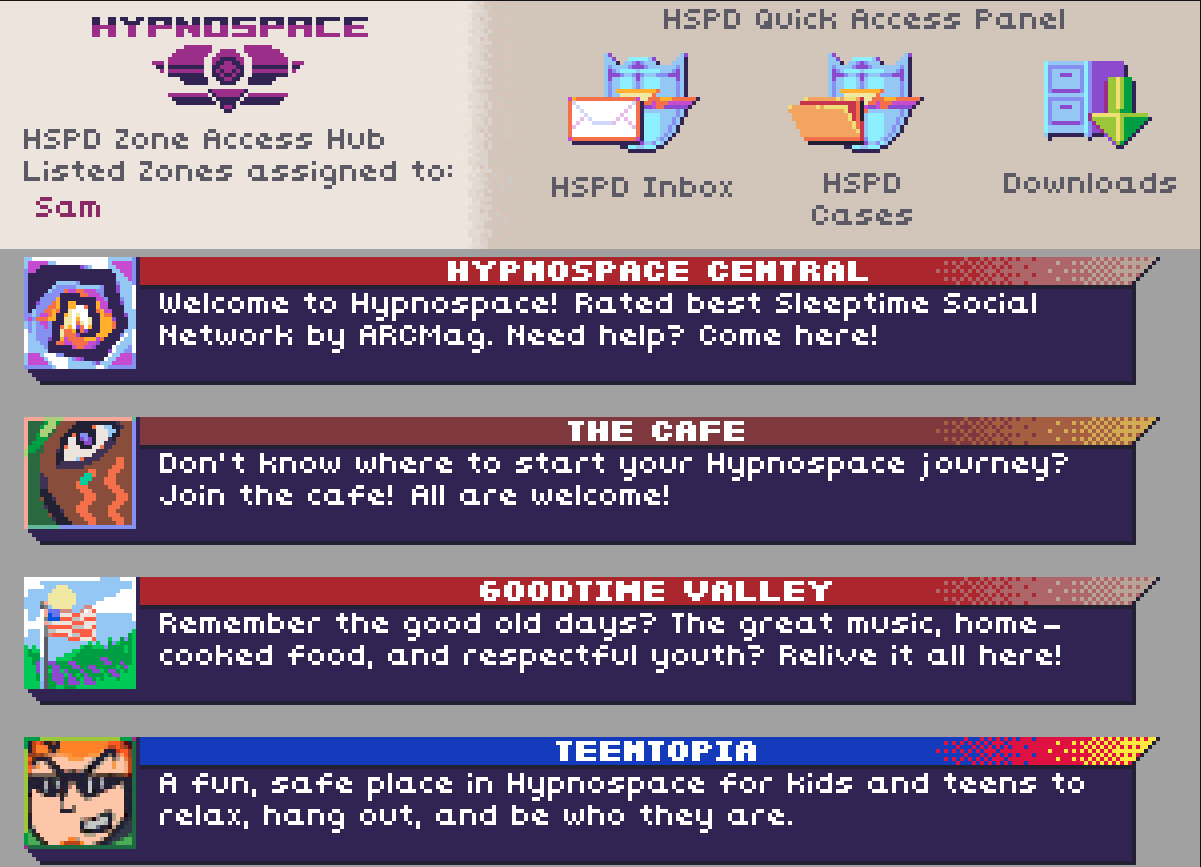Latest reviews
I went on this tour with my family, and loved every minute of it! There were jumpscares and jokes, amazing special effects (such as birds flying overhead on cue), and a brilliant and immersive retelling of Edinburgh’s history. The two who were running it seemed jolly and excited, and perfectly presented their characters. Would go again.
Friendly staff, great service and delicious pizza. What more could you want? Plenty of choice for gluten-intolerant people (coeliacs), and the leftovers were boxed up within seconds of us asking, for us to take them home. Will definitely visit again.
This was a brilliant day out! The illusions themselves were varied and interesting. Everything from automata to plasma spheres to a mirror maze. The camera obscure was very interesting and was presented awesomely by the staff. I would definitely visit again.
I went here for breakfast on my trip to Edinburgh. The food was great and the staff were friendly. There was also plenty of choice for coeliacs (people who are gluten-intolerant). The choice of music (mostly rock, alternative, and grunge) that was playing was also fantastic. Would definitely visit again.
I visited this restaurant with my family on our first night in Edinburgh. We had been wandering the area for a while, searching for a restaurant that was open, not too expensive, not too busy, and that served gluten-free food. We found it at The Ship On The Shore. The staff were cheery and helpful, and there was a good selection of drinks. I had the linguine, followed by limoncello sorbet, which were exquisite. While the entire meal was a bit more expensive than we are used to, I would say that it was worth it for such an enjoyable meal.
The WiFi was not working and the beds were a bit uncomfortable, but the staff were friendly and helpful, the rooms were clean and it was, overall, pretty good for a budget hotel. The hotel is also not far from the city of Edinburgh, so breakfast and entertainment are well within reach.
You don’t know what to expect from the odd-looking wooden box which now holds pride of place in your living room. You turn it on and fumble with the controls for a while. Suddenly, the voice of an opera singer pierces the static.
It’s like magic, coming to you through the air, filling the world with possibility and wonder.
What is it like to witness the birth of an invention set to transform humanity? I was not around when radio was invented, but I did experience BBS culture and the early web of the 1990s. It was a time when millions of people were “coming online” for the very first time, without any idea of what that meant. The Internet, as David Bowie put it in 1999, was “an alien lifeform”.
The past that wasn’t
Hypnospace Outlaw is a 2019 indie game that lets you experience the birth of a surreal alternative reality version of the early web. The year is 1999. You are a community enforcer in hypnospace, a web-like network accessed through special headsets people wear during their sleeptime.
You play the game through a desktop environment that looks a bit like Windows 98, macOS and Microsoft Bob were put through a blender. It comes with a browser, an email-like messaging app, a virtual wallet, and a download manager.

You interact with the world of Hypnospace Outlaw through a desktop environment that combines the best and worst of computing around the turn of the millennium. Fortunately, downloads are a lot faster in this simulated reality. (Credit: Tendershoot. Fair use.)
Unlike the web, hypnospace is controlled by a single corporation, Merchantsoft. Its customers can create pages, which are organized into different communities like “The Cafe” and “Goodtime Valley”. On the surface, it resembles web communities like Geocities or its modern-day nonprofit successor, Neocities.
Yet, as the player, you are keenly aware that this is not the early web but an alternative history. You don’t know the rules of this world, but you are tasked with enforcing them. Soon, you receive your first assignment: to trawl hypnospace for copyright violations. Maybe this alternative reality isn’t so different after all…
Much of the gameplay is exploratory: browsing pages, downloading and trying little apps, getting rid of viruses that came with the apps you just tried, and so on. The assignments you receive guide you through the game’s larger narrative and timeline.
Rhythm of discovery
Music is everywhere in Hypnospace Outlaw. The game world is suffused with fictional bands and their creations, from the optimistic MIDI sound of the Millenium Anthem to hyper-commercial, autotuned “coolpunk”; from “Seepage” tracks that sound like Linkin Park demo tapes to the wonderful ridiculousness that is “The Chowder Man”.

The communities you interact with in the game are haplessly curated by the Merchantsoft corporation, though you’ll soon discover corners of hypnospace that have eluded its control. (Credit: Tendershoot. Fair use.)
It really does feel like you’re back in the late 1990s, building a library of MP3 files from dubious sources and trying to figure out what’s actually worth listening to when you can listen to anything.
Amidst the surrealism of it all, the game does have things to say: about commercial control over online communities, about critical thinking, and about the pure joy of free expression in a nascent medium. As I reached the end of the story, I found myself far more emotionally invested than I expected.
The Verdict
I recommend Hypnospace Outlaw without reservations; it truly is a small masterpiece of immersive storytelling. But I would suggest keeping it in your backlog until you have a few hours at your disposal and are ready to fully engage with its world.
This is not a game to rush through, but an experience to savor. As Fre3zer would put it: you gotta “chill it right”.
Primer
Panniers are a staple for carrying stuff on your bike, but sometimes you need to lock your bike and continue on foot. Standard panniers tend to have some sort of carrying straps, but they aren’t very convenient off the rack. Ortlieb Vario PS rises to the challenge by doubling as a backpack!
The review
This isn’t the only backpack pannier out there, but based on my experience and research, it’s likely one of the best. Why? First off, the build quality is good, and being Ortlieb, it’s fully waterproof. As a pannier it functions just as one would expect. It’s really the backpack side that makes things interesting. And I say side for a reason. Unlike in many other backpack panniers, the rack mounts and the backpack straps are on different sides of the bag. This gives room for properly implementing both.
The only hiccup this product runs into is in the backpack mode. There’s a plastic bottom plate, which unfortunately has a tendency to burrow into one’s lower back. Unless remedied, this can make the backpack really painful under a heavier load. Luckily the bottom plate is detachable so one can just take it out, or put some padding to it’s edge. Still, this is a rather dumb design flaw in an otherwise great bag.

The bottom plate is shown in lighter grey. Otherwise one can see that the bag is quite roomy. (Credit: Ortlieb. Fair use)
The verdict
Despite the one flaw, Vario PS is still probably the best pannier backpack out there. If you’re ever riding with just one pannier, this is a near perfect choice.
Organic maps is FOSS and uses Open Street Map data. You can download regional maps for offline usage. All the basic mapping features are there, though some more advanced ones might still be lacking at this date.
Compared to Google Maps and the like, Organic maps respects your privacy.
Compared OsmAnd — which is the de facto mobile app for OSM — Organic is faster and has a cleaner UI. OsmAnd gets quite laggy when there are a lot of maps downloaded.
The review is based on the freely available extract of El Dik, Dina; Iskander, Emad (2021). Yalla! Let’s Learn Egyptian Colloquial Arabic Verbs. ISBN 978-977-416-909-0 available here.
The approach to give all the Egyptian Arabic verbs and their forms in Arabic script seems to be more or less unusual in the sphere of Egyptian Arabic grammar books. I think it is useful though as it gives morphological information that is harder to derive from romanizations. Moreover, the words can actually be found in real life in written form, so it is useful to learn them in Arabic script. This makes it easier to recognize them in such a context. On the other hand the book uses Arabic spellings adapted to pronunciation that are not found in written texts in the wild. Maybe a combination of Arabic script and transliterations would have been a superior approach.
Sorting the verbs by frequency of their usage looks like a very good order for studying the most common verbs first.
The “Grouping of ECA verbs” (pp. XI–XIV) in the introduction is a nice overview. Unfortunately, it might evoke the impression to list all existing patterns maybe with exception. This is not the case and should have been mentioned clearly I think. Many verbs with defective, hollow or doubled roots and as such their underlying patterns exist for forms where the given list leaves those out.
Quite some smaller mistakes in the introduction (“**Form I” should instead read “*Form II”, p. XIII; I think I’ve seen more that I failed to note down) undermine the trust in the reliability of the book that might appear at more critical content harder to spot).
The price of 25 GBP is sadly quite high.
Given the mentioned drawbacks, the books still looks like a helpful resource for students aiming to improve their understanding of Egyptian Arabic verbs, especially due to the used order by frequency and the use of Arabic script despite its artificial spelling.
